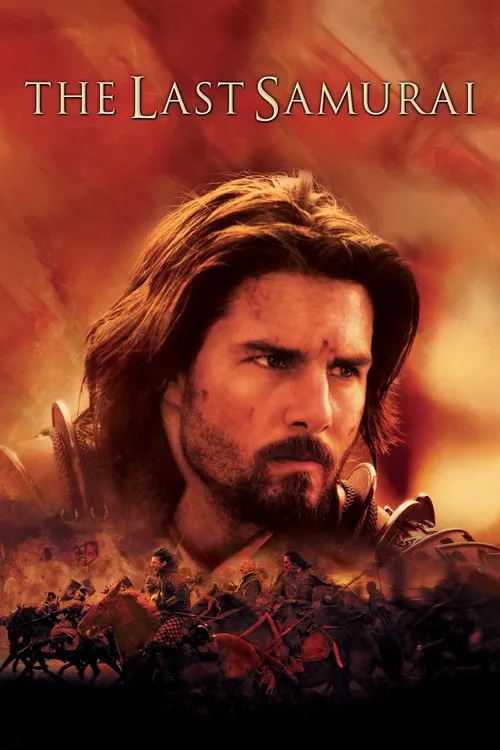The Last Samurai

Plot
In the late 19th century, Japan is undergoing a period of rapid modernization under the rule of Emperor Meiji. The once-feudal society is transforming into a modern nation, with the introduction of Western ideas and technologies. This transformation is driven by the Japanese government's desire to join the modern world and catch up with Western powers such as Britain, France, and the United States. Against this backdrop, the Japanese army is seeking to modernize its military tactics and training methods. They hire American Nathan Algren, a former soldier who fought in the American Civil War and then went on to participate in the Boxer Rebellion in China. Algren is commissioned to instruct the Japanese army in the ways of modern warfare, with a specific focus on improving their combat skills and training methods. Algren arrives in Japan, a foreign land where he knows no one and struggles to communicate with the locals. He is initially dismissive of the samurai's traditional way of life and sees them as relics of a bygone era. Their traditional dress and customs are unfamiliar to him, and he cannot understand why they insist on adhering to such an archaic code. However, as Algren begins his training, he starts to develop a deep respect for the samurai warriors. He is struck by their discipline, their skill with their swords, and their unwavering commitment to their code of honor, Bushido. The samurai are not simply warriors; they are philosophers, poets, and artists, too. They live by a set of strict principles that govern their behavior, including loyalty, honor, and self-discipline. Through his interactions with Katsumoto, a skilled and noble samurai warrior, Algren begins to understand the significance of Bushido in the samurai's lives. Katsumoto is a leader of the samurai, and he welcomes Algren into their fold, recognizing that the American is genuinely interested in learning about their way of life. As Algren becomes more immersed in the samurai culture, he comes to question the motives of the Japanese government. The Meiji regime is pressing hard to modernize Japan and open it up to the world. However, this process of modernization comes at the cost of the samurai's traditional way of life. The samurai are seen as relics of the past, standing in the way of progress. The government's plan is to turn Japan's feudal society into a modern, Western-style industrial nation. This will involve the forced assimilation of the samurai into the new society and the suppression of their traditional practices and customs. The samurai are forced to adapt to the new order, or risk being cast aside as irrelevant and redundant. Algren realizes that the samurai are fighting for their very existence and that they are fiercely dedicated to their way of life. He begins to see the samurai as more than just brave warriors; he sees them as guardians of a traditional way of life that is under threat from modernization. Algren decides that he cannot stand by idly while the samurai's way of life is destroyed. He must take action to protect the samurai's rights and traditions. In a dramatic and poignant twist, Alregn joins the samurai, donning the uniform of a warrior and pledging his loyalty to Katsumoto. He undergoes rigorous training, where he faces many challenges and hardships, in order to become an honorary samurai. Algren develops a deep bond with Katsumoto and the other samurai, and he comes to understand the true value of their way of life. Together with the samurai, Alregn takes up arms against the Japanese government and its soldiers. The final battle is intense and bloody, with Alregn facing off against General Takeda, the ruthless leader of the modernized Japanese army. Alregn fights not just for the samurai's rights, but for the honor of the samurai and their way of life. In the end, Alregn emerges victorious, but not without scars and injuries. He is forever changed by his experiences as a samurai, and he has gained a newfound appreciation for the culture and traditions of Japan. As he returns to America, Alregn is forever haunted by the memories of the samurai and their tragic fate. The Last Samurai is a poignant and powerful film that explores the clash of cultures and the power of tradition in modern society. The film's themes are timeless, addressing the complexities of cultural change and the struggle between tradition and modernity. It is a tribute to the courage and honor of the samurai, who stood by their code of Bushido even in the face of catastrophic failure. Through Alregn's journey, the film offers a nuanced and thought-provoking portrayal of the samurai's way of life and their place in the modern world. Ultimately, The Last Samurai is a beautifully crafted film that honors the memory and legacy of the samurai. Its visually stunning cinematography, intricate costume design, and compelling narrative make it a compelling tribute to this fascinating chapter in Japanese history. As Alregn's journey comes to an end, the film's final scene offers a poignant glimpse into the past and a triumphant celebration of the samurai's honor and bravery.
Reviews
Recommendations


